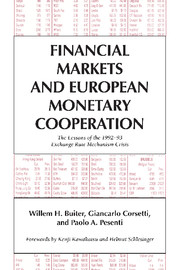From Bretton Woods to the Treaty of Maastricht
The Bretton Woods days
Throughout the history of the European Community, both the political and the intellectual leaders of the movement towards European integration have shared a pronounced aversion to exchange rate fluctuations. One after the other, the political initiatives undertaken to strengthen the process of European integration have led to attempts to lock European currencies into systems and mechanisms that limit the flexibility of their conversion rates. Even during periods when the tide of European integration was at a low ebb, the idea and ideal of exchange rate stability never completely disappeared from the institutional architecture of the Community.
In the first fifteen years after the Treaty of Rome created the European Economic Community (EEC) in 1958 (with the aim of developing a common market for goods, services, labor, and capital), it was the Bretton Woods system that provided the institutional framework for exchange rate stability. The Treaty of Rome did not go beyond characterizing exchange rates as a matter of common concern (Art. 107 of the Treaty). In pursuit of the common goals of external equilibrium, full employment, price stability, and confidence in members' currencies (Art. 104), individual countries were authorized to take appropriate actions whenever exchange rates appeared to be inconsistent with these overarching objectives (Art. 107).
No mention was made of the desirability, let alone the possibility, of a European monetary union, since within the framework of an Atlantic strategic alliance, no form of monetary cooperation independent of the United States dollar was considered feasible at the time.
